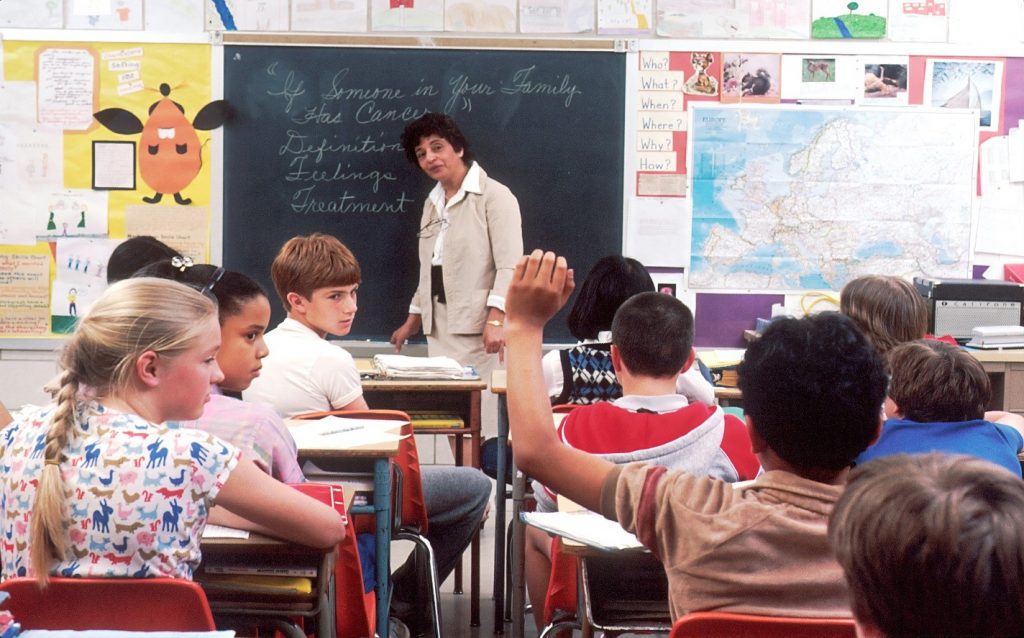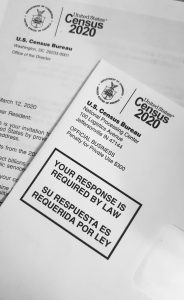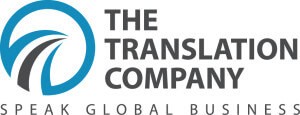
‘Education is the most powerful weapon which you can use to change the world.’
– Nelson Mandela
We can all agree that education is one of the most fundamental pillar stones in paving the way for the future. Whether we are talking about young, wide-eyed children, alert adolescents, hard-working college students, or even adults striving to learn a new skill, we all want the same thing:
A great quality education that helps us succeed.
But how can we achieve that if, as a student, you cannot connect with your teacher or tutor due to a language barrier? Or, as a worker in the education sector, you cannot communicate your message to students, staff, or parents? The answer is simple – by translation. Though in practice, it has its obstacles.
What Is the Purpose of Translation?
Simply put, translation is when we convey meaning with words in one language and change them into another.
Bilingual students are on the rise, so academic translation and bilingual education should be, too. Now with Google at the tips of our fingers, it seems the translation has never been easier… but don’t be fooled.
Education translation is necessary to spread information, knowledge, and ideas. It is necessary for effective and empathetic communication between different cultures. (Exeter University)
Can online automated translation services capture the essence of true meanings? What about phrases, colloquialisms, and expressions? And how well do they do when it comes to education? Or when one person is trying to understand and learn a new concept?
Free Quote
sales@thetranslationcompany.com
800.725.6498
Education Translation Services
Why Translation Is Needed in Education
The main goal of translation in the education system is to ensure that both teachers and students understand each other on multiple levels. That means translating much more than just words – students need to be able to understand the concepts that the teachers are sharing with them as well.
In return, students should be able to ask questions and interact back and forth with their tutors so they can understand the content and, more importantly, the context of what they are studying, English Language Learners ELLs whether that be coursebooks, study guides, presentations, worksheets, or even exams.

Engaging Parents in Their Children’s Learning
About 20% of the U.S. population speaks a language other than English at home (American Academy of Arts and Science). Many parents who are raising bilingual children report that they feel frustrated that they cannot help them academically. Non-English-speaking parents in the United States, for example, feel a huge barrier in being part of their children’s education and, therefore, future.
Translation in education can help parents overcome these barriers in many ways. Firstly, they can have a more active role in home study. They will be able to assist their children when studying and understand what it is their children are working on.
Another way translation can help parents engage in their children’s learning process is by giving parents a chance and ability to interact with teachers at parent-teacher conferences. This is such a huge part of parenting that many non-English-speaking parents have to miss out on.
Then there are other more practical ways that translation can be helpful, for instance, in notifying families of any school closings or potential delays. It can also be very helpful in communicating curriculum requirements by keeping parents up to date and informed.
Research has shown us time and time again that we need parents to be engaged in their children’s education. When parents are active participants, students are much more likely to succeed in their educational careers. Having translators for parents or guardians who are non-English speaking gives them the chance to be engaged in this vital part of their children’s lives.
Enhancing More Productive Educational Meetings
We talked about parent-teacher conferences and how important they are for students, teachers, and parents. Now imagine when schools call for bigger meetings that involve a class, a year group, or even the whole school. These, in general, are arranged to discuss important changes, upcoming events, or issues that directly affect the children. Think of a scenario where you have been in a school meeting recently. Maybe there are disciplinary rules or health issues that are being discussed. Yet, there is a significant number of parents who can’t understand a word that the school’s administrators are saying.
These meetings become a source of frustration for those who can’t understand because they know they are missing important information. It is difficult for the staff holding the meetings because they know that some parents can’t understand, and they try to compensate for that. This, in turn, can cause issues for parents who do understand, and these parents end up feeling a great deal of exasperation each time the meetings overrun since there is a lot of repetition and sometimes the main point of the meeting can be missed entirely.
If you are the person responsible for organizing these meetings or delivering them, you can feel an immense amount of pressure. Even with full planning, being prepared, and being an expert in the information you deliver, it is disheartening and deflating if it goes wrong due to circumstances beyond your control. The truth is that none of these educational meetings can be productive or effective without the intervention of an educational interpreter.
Free Quote
sales@thetranslationcompany.com
800.725.6498
Education Translation Services
The Success of the Students
Teachers don’t just tell students the answer to questions. They teach them how to problem-solve. Teachers are providing students with important concepts that they will apply throughout their entire lives.

If a student doesn’t understand a concept, then simply put, they won’t be able to apply it later. They haven’t learned what they have been taught. Having life skills leads to better success in the future for students, and having a fundamental understanding of lessons is essential.
For all students who are non-English speaking or those who speak English as a second language, misunderstanding can quickly become a big barrier. It is incredibly important to provide all students with the necessary translation needs to set them up for success now and in the future.
It is best practice if language conversion for students happens in real time. This is because the students and teacher need the ability to translate languages in both directions simultaneously. Students instantly need to be able to understand the subject matter that is being taught, and then the teachers need to be able to understand the questions which students are asking.
Compliance with Legislation
Not many people are aware of The Civil Rights Act of 1964, never mind non-English speaking residents; however, the legislation is very clear:
“No person in the United States shall, on the ground of race, color or national origin, be excluded from participation in, be denied the benefits of, or be subjected to discrimination under any program or activity receiving Federal financial assistance.” – The Civil Rights Act of 1964
In August of 2000, the government introduced Executive Order number 13166: Improving Access to Services for Persons with Limited English Proficiency into the current law. This law focuses on translation and makes it a requirement of federal agencies to examine current services that are being provided. They then will need to identify if there is still a need. If there is, federal agencies develop and put in place a system to provide those services.
Empowering Teachers and Educators

The number of students in the US who are registered as English Language Learners ELLs (Students who are not proficient in English) is at 10.1 percent, or 5 million students (National Education Center for Statistics), and this can present several difficulties for educators.
According to the National Education Center for Statistics the average class size in public schools is 25 children; this means that statistically speaking, in every single class, two children do not understand English proficiently. This poses a huge challenge to teachers.
Classroom teachers, in general, receive very little training on how to accommodate these English Language Learners within their classrooms properly. It can be very challenging to address the needs of English Language Learners students within the same classroom as native English learners. They can each differ in their own first language and then again with the degree of their English language skills.
Better Student-Teacher Relationships
A trained educational interpreter plays a critical role in ensuring that non-native-speaking students can build the best relationship with their teacher or tutor. An educational interpreter should make the flow of information seamless.
In the beginning, it can take some getting used to, but over just a short period, the teacher and student shouldn’t feel the presence of the educational interpreter. Instead, the discourse of conversation should be made to feel direct. The educational interpreter is not there to teach the child, only to facilitate the communication between teacher and student, building on their relationship.
Free Quote
sales@thetranslationcompany.com
800.725.6498
Education Translation Services
Translation Services
There are many translation services available online that offer people great options when it comes to translating pieces of text, and many are free. Students have easy access to them and often use them in everyday life already. However, machine translations have many limitations.
Why Can’t Students Just Use Free Translation Services?
Well, of course, they can. However, the software does not consider the association of words or the cultural and social context of a conversation.
Remember what we mentioned before about small changes we make as natives, such as colloquialisms, idioms, or even slang? So, these small variations in translation can make a big difference.
For example, in Spanish, there is a very popular phrase:
No tener pelos en la lengua
If you put this into a translation software, it will say:
Without hair in your tongue
Doesn’t make much sense. However, the actual meaning of this phrase is:
To be outspoken
A little different from the offered translation. The problem is that these tools will translate word for word, but they can often become confused by idioms or complex phrases. Think about teaching algorithms, Planck’s quantum theory, or studying Shakespeare or Hemingway.
Using free software can leave the final translation incomplete or, at worst, extremely inaccurate.
Person-to-Person Translation
Having a translator who is professionally trained and qualified to translate for you in real-time will allow for the cultural background to be considered. A person is not only able to navigate complex sentences but also convey emotion in ways that a computer program or free software cannot.
Using a professional translation service, whether that service is in-person, through a video conference such as zoom or skype, or even over the phone, will always ensure that idioms, expressions, slang, and colloquialisms aren’t missed.
Another essential tool for bilingual language is the dual programs that offer students the opportunity to learn in a bilingual environment that help students that are not English proficient but also helps students to learn another language.
It will also ensure that the correct tone, emotion, or cultural respect is shown in any circumstance.

The Translation Company Group
The Translation Company delivers quality, care, and understanding in every project offering a range of services that are tailor-made and adapted for the education sector. The Translation Company guarantees 100% satisfaction on all of their projects and has been in the business for over 15 years – they know exactly how to deliver a fantastic service.
Whether you are looking for that person-to-person translation, typed work such as newsletters and announcements, or perhaps as a parent, you want to support in helping your children. You might even already be in the education sector and looking to develop your practices; they can help you.
With offices in the US in Frisco, New York, Dallas, and San Francisco and internationally in China and Brazil, they cover various areas and time zones. Offering translation services in over 200 languages with a huge range of subject matter experts, they will be able to assist you in all your educational translation needs with outstanding quality and service.

Free Quote
sales@thetranslationcompany.com
800.725.6498
Education Translation Services
